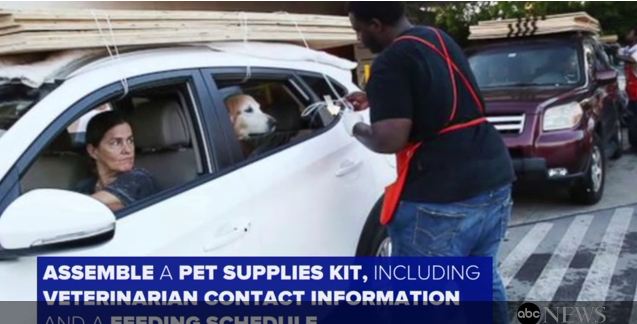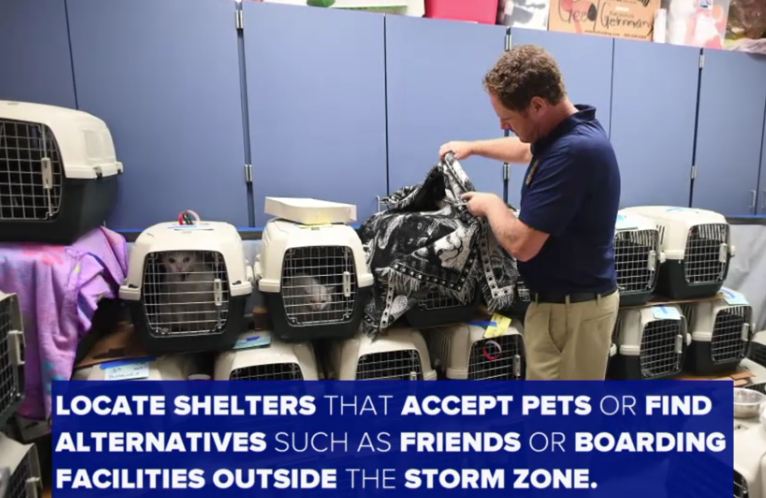
How To Protect Pets During Hurricane Irma
As we have seen, most recently with Hurricane Harvey, the number of displaced or lost pets can be staggering. As Florida and points north prepare for Hurricane Irma, pet owners should take measures to ensure the safety of their animals.

In a recent report by ABC News, Aaron Johnson, director of the Montgomery County Animal Shelter in Conroe, Texas, who was on the ground helping stranded animals to shelters after Hurricane Harvey struck the state last month, advised Florida pet owners to be prepared and follow evacuation orders.
“People just really need to have a plan,” he said on “Good Morning America.” “Know where they’re going to evacuate if they need to evacuate, listen to authorities [and] do evacuate.”
Mandatory evacuations have already been ordered for Monroe County, which includes the Florida Keys, and parts of Broward County.
Additionally, if your pet is still not microchipped, now is the time. It’s a sentiment that reps from the Humane Society of the U.S. agree with. At the very least, dogs and cats should be wearing collars and/or harnesses with identification tags.
Perhaps most important, this advice from the Florida Division of Emergency Management (FDEM): bring pets with you when evacuating.
FDEM also recommends Florida residents get prepared now, before Irma is at the door. On their checklist:
1. Assemble a pet supplies kit: The FDEM advises creating a kit, stored in a sturdy container, with supplies for your pet including medications, leashes and/or carriers, current photos of your pet, food (including a can opener as needed), potable water and water bowls, toys and beds (if transportable), veterinarian contact information and a list of your pet’s feeding schedule, medical conditions and any behavior problems.
2. Know where you can go! Some shelters will not accept pets. Find out which do ahead of time and call local lodging and family and friends outside the storm’s reach to see where you and your pet can stay. FDEM says that local animal shelters and boarding facilities and veterinarians can also be resources for pet owners as they plan ahead.
3. Bring pets inside: As the storm approaches, bring pets indoors so you can evacuate or shelter inside at a moment’s notice. And as you leave, keep pets in carriers or on leashes at all times. Never leave them unattended.
For cats, ensure that all crevices in the home are sealed off, eliminating the possibility of a spooked cat to make it a hiding place.
If you’re returning home after a storm, keep your animals leashes. They may be disoriented post-evacuation, so try to be patient.
“Try to get them back into their normal routines as soon as possible,” the Humane Society advises, noting that pets with persisting behavioral or medical problems should be evaluated by a veterinarian.

+ There are no comments
Add yours